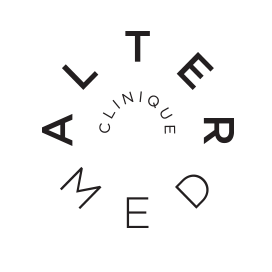Emilie Martel

THE MASSAGE THERAPIST: YOUR MUSCLE REPAIRER!
Knots, tensions, points, stiffness, resistance, aches, muscle fatigue or ankylosis, all problems that you have already experienced at one time or another in your life. Sometimes going so far as to impede the movement of one or more joints, to radiate elsewhere, to cause you headaches or to shoot up in a limb (ex. the famous sciatic nerve). And, when the tensions or knots become more severe, they compromise your quality of life, your activities of daily living and sports, your quality of sleep, and even your psychological health and morale.
As a physiotherapist, one of the most frequently asked questions is: why do muscles form tensions and knots that hurt so much? Well, here is the answer to your question. But first, how does a muscle work?
There are 3 types of muscles in the human body: smooth muscle, heart muscle and skeletal muscle. It is the latter that concerns us in this article. It is called skeletal muscle because it is the muscle that makes your skeleton move via its attachments to the bones. It is also called voluntary muscle because you can voluntarily make it move, unlike your stomach or your heart which you cannot control yourself. In short, your skeletal muscles are the organs that specialize in movement and locomotion (your movements). Your body has about 600 muscles that work 24/7, even when you are asleep. This is what a muscle looks like.
Simply refer to the image below, think of the song The Tree is in its Leaves and follow me!
The muscle (let's take the most famous one: the biceps in the forearm) is composed of (A) bundles. In the bundles, there are (A) fibers (or muscle cells). Within the fibers/cells, there are (B) myofibrils. And in the myofibrils, there are (C) myofilaments: one composed of actin and the other, of myosin. When we want to contract our biceps brachii to bend the elbow, the actin and myosin myofilaments form bridges that pull the myofibrils, then the fibers/cells, then the bundles and finally the biceps muscle. The result: our elbow flexes.
Muscles pull the bones in your skeleton, they do not push them. If you want to bend your elbow, your brain sends the command to the biceps to contract. If, on the other hand, you want to extend your elbow, another muscle will receive the command from the brain: the triceps, which is located at the back of the arm.
To work, your muscles need a lot of blood to function. In order to contract, but also to relax, they need an energy molecule called ATP. These molecules are needed to form the actin-myosin bridges and to break them apart to release the contraction and bring the muscle to rest. It is at this level that knots, tensions or muscle points are formed. If there is a lack of blood in the muscle fiber, the actin-myosin bridges no longer receive ATP. The actin-myosin bridges can no longer be released, and the fiber can no longer relax. When the lack of blood reaches the upper layers of the muscle, i.e. the fascicles and part of the muscle, a knot forms. The knot(s) will be painful if it traps nerve fibers that are adjacent to the muscle. If there are too many trapped nerve fibers, the pain can spread elsewhere.
But, good news! Muscle knots and tension are not irreversible.
How do you replenish your muscles with blood full of ATP? Here's a simple recipe you can do on a daily basis.
1) Apply localized heat to the muscle tension. Heat has the effect of opening blood vessels (called vasodilation), and therefore improving blood flow to the muscle area being treated. For example, you can take a hot bath, use a heating pad, a magic bag, etc.
2) Static stretching session. Stretching creates a pumping effect in the tense muscle or muscles. This effect promotes the influx of new blood into the muscle, and the drainage of metabolic waste products that the muscles accumulate when they work.
3) Good hydration. Blood is composed of 90 to 92% water. If the body lacks water, the blood becomes more viscous. Therefore, it doesn't flow as well into the tissues, including the skeletal muscles. Fill up on water often!
4) Get moving! Our skeletal muscles hate being sedentary and staying in static postures for long periods of time. Get up from your chair often, take a short 5 or 10 minutes to roll your joints to their full range of motion, stretch and take deep breaths. Your skeleton and muscles will thank you!
5) Give yourself some rest. Muscles are like us
5) Give yourself a break. Muscles are just like us: sometimes they like to take a vacation. After a good day, give them a well-deserved rest and a good night's sleep! It is during the night that they replenish their energy reserves, repair themselves and learn to adapt to what we ask of them every day!
6) Massage therapy. All of the above advice is not really working? Then don't hesitate to get a good massage therapy treatment. We, as massage therapists, are the health professionals who use our manual skills to provide effective mechanical assistance for muscle drainage. We use a variety of techniques to encourage muscle fibers to fill with blood and release the tension that has built up over time in your muscle network.
One of these techniques is physiotherapy. Some massage therapists, like me, are also physiotherapists. This term simply means that we use passive mobilizations and stretches to further encourage muscle relaxation.
So, are your muscles letting you know they want a vacation? Listen to them and don't hesitate to come see us!
Émilie Martel, B.Sc.
Physiotherapist and kinesiologist. Altermed Clinic, Montreal.
Sources :
Image: Waugh, A. & Grant, A. (2011). Ross and Wilson - Normal and pathological anatomy and physiology. 11th Edition. Chapter 16. P.435.


